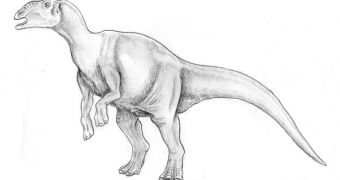Experts digging in the Zhucheng province of China have recently discovered what is arguably one of the largest and most massive troves of dinosaur footprints ever found. More than 3,000 fossilized tracks, belonging to several species, have been discovered at a site that has been under excavation for at least three months. Archaeologists who have had the chance to look at the fossils say that they surely represent one of the most important findings in the field, and that studying these relics may provide some important clues about the ecosystems of China some 100 million years ago.
According to the BBC News, quoting the Chinese state news agency Xinhua, members of about six species of dinosaurs took to the road all those years ago. Explanations for this large number of animals gathered in one spot at one time range from a migration to escaping predation. Indeed, the creatures may have been all trying to escape a very large group of predators, something that is very rare, but not impossible. Conversely, the animals may have been spreading out of their original habitat, having already finished consuming everything that could be constituted as food at that particular location.
The Zhucheng province is renowned for its impressive dinosaur-fossil records. Up until now, such artifacts have been recovered from more than 30 sites across the entire region, and the Zhucheng city even became known as the “Dinosaur City” because of this. Experts who investigated the new tracks believe that they may have belonged to species including tyrannosaurs, coelurosaurs and hadrosaurs. The thing about these footprints is that they are all heading in the same direction, as if something had scared the animals off. It is relatively uncommon for herbivorous and carnivorous species to be traveling together, so, most likely, all the creatures were running away from something.
The digs also revealed that the giant lizards were also running as a group. All 3,000 prints were found in an area covering just 2,600 square meters (0.64 acres), which means that the group could have been even larger. All the fossilized imprints were discovered on the same rock bed, so animals running outside of it would have not left behind any visible tracks. The researchers on the site revealed that the tracks were of variable lengths, stretching between ten centimeters to 80 centimeters. In addition to being of varied species, the animals must have also been of different ages, they concluded.

 14 DAY TRIAL //
14 DAY TRIAL //